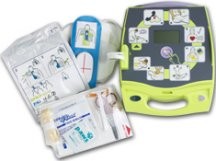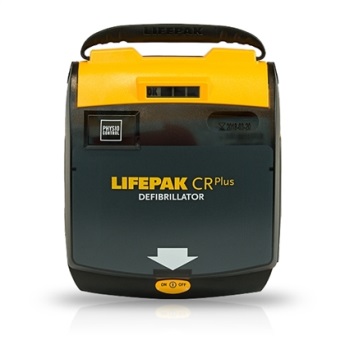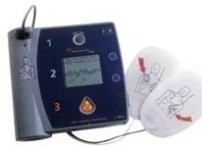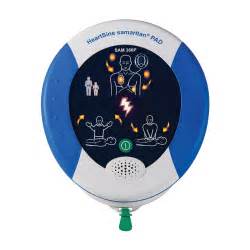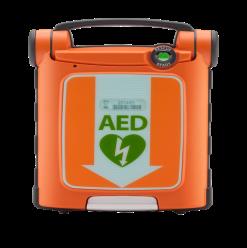Access to Defibrillation Program
The Charter of the French language and its regulations govern the consultation of English-language content.
You play an essential role
The Charter of the French language and its regulations govern the consultation of English-language content.
Sudden cardiac arrest (SCA) is the leading cause of death in North America. SCA is usually caused when the electrical impulses in the heart muscle become disorganized (arrythmia). The only treatment that can save the victim’s life is to use an automatic external defibrillator (AED) to deliver an electric shock to the heart and convert the arrythmia to a normal heart rhythm. Defibrillation is a vital link in the chain of survival.
The survival of a person experiencing arrythmia depends on the speed of reaction by witnesses. Do the following:
- Call 9-1-1
- Ask for an AED location
- Start cardiac massage (CPR) immediately
- Use the AED if available
Without these actions, the victim’s brain no longer receives oxygenated blood, and cerebral dealth can begin in as little as three minutes. Your reaction could more than double the victim’s chances of survival.
You are protected under the law!
The Quebec Charter of Human Rights and Freedoms is clear (CQLR, c. C-12, s. 2).
“Every person must come to the aid of anyone whose life is in peril, either personally or calling for aid, by giving him the necessary and immediate physical assistance, unless it involves danger to himself or a third person, or he has another valid reason.” The Civil Code of Quebec protects persons providing assistance, who are exempt from any injury to the victim that may result, unless the injury is due to gross fault (which means gross recklessness or negligence, or intentional fault).
Under the Regulation respecting the professional activities that may be engaged in within the framework of pre-hospital emergency services and care and the Professional Code (CQLR, c. C-26, s. 2), “In the absence of a first responder or ambulance technician, any person may use the automated external defibrillator when performing cardiorespiratory resuscitation.”
Urgences-santé wants facilities with AEDs on site to register the AEDs with our health communication centre, which receives 911 calls. The information will be provided to 911 dispatchers when a 911 call is placed from a registered location. The 911 dispatchers can then tell the first responders where the AED is located.
The chain of survival
The most important survival factor is the time it takes to start defibrillation. The rate of survival falls between 7% and 10% with every passing minute. After 12 minutes without defibrillation, the survival rate among adults drops to below 5%. All Quebec paramedics receive defibrillation training so that they can use the AED before transporting the person to hospital..
Thanks to huge technical advances, today’s ultra-effective, safe and affordable AEDs are now available to everyone. We recommend a short training course (30 minutes to four hours) to learn how to perform AED defibrillation if a cardiac arrest occurs in your presence. Defibrillation can now be offered much more quickly, increasing the victim’s chances of survival significantly. Remember – every minute counts!
The Corporation d’urgences-santé’s mission includes ensuring that any citizen in distress within its territory has rapid access to high-quality emergency case. However, as noted above, the survival of a cardiac arrest victim depends on a solid chain of response. The Corporation d’urgences-santé has implemented an Access to Defibrillation Program to increase survival rates among cardiac arrest victims. The goal of the program is to facilitate the implementation of an action plan for assisting cardiac arrest victims, one that includes defibrillation.
AEDs are programmed to accurately assess a victim’s heart rhythm and administer a shock, so don’t worry about hurting the victim.
If the victim is unconscious and you cannot detect respiration or circulation, use the AED. The AED tells you where and how to apply the two electrodes on the victim’s chest, and then talks you through the process of administering a shock, but only if necessary. There are usually only two buttons on the AED: Start and Shock. You administer a shock when directed by the AED.
There are several types of Health Canada-approved AEDs on the market. The choice of AED depends on the client’s needs, preferences and budget.
See the images below, showing the features of each AED and the manufacturer’s website.
During CPR training, you will learn to use an automatic external defibrillator safely and effectively. By using a combination of CPR and the AED, you can significantly improve a cardiac arrest victim’s chances of survival.
Working with Urgences-santé and Heart; Stroke, the ministère de la Santé et des Services sociaux developed the Hero in 30 program, which teaches participants, in only 30 minutes, how to perform CPR and use an AED.

